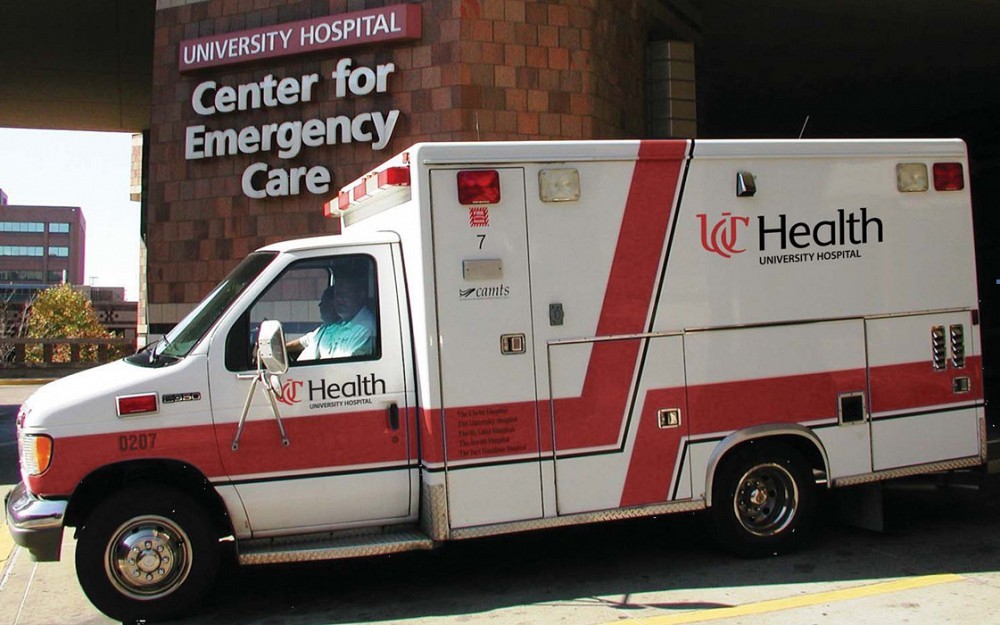
UC HEALTH LINE: Tornado Precautions Advise Seeking Shelter First, in a Building or a Car
CINCINNATIThe storms that tore through the country last week brought devastation and damage to many areas in the Midwest and Greater Cincinnati. With turbulent weather still ahead in the spring, University of Cincinnati (UC) emergency medicine experts hope to remind the population of important safety precautions to take during severe weather.
In the past few years, one of those precautions has changed. If caught outside during a tornado, instead of first taking cover in a ditch, the American Red Cross now recommends staying in your car when in the path of an approaching tornado.
"Many cars today are built to withstand high winds and rollover crashes, says Donald Locasto, MD, director of the EMS division in the UC Department of Emergency Medicine. "If you can stop your car, leave it running, buckle up and duck below the window level, the vehicle can offer greater protection than being outside in the path of a tornado.
He says ditches or open trenches below the road level can offer protection from direct wind, but they also can quickly fill with water during a storm. Additionally, large debris can land in the ditch, striking someone seeking shelter there.
The new recommendation was added to the American Red Cross Tornado Safety Checklist after a 2009 review. Locasto, associate professor of emergency medicine at UC and medical director for the Cincinnati Fire Department, is a member of the Scientific Advisory Council for the Red Cross and participated in the research review that led to the revised checklist.
During a tornado warning, the first recommendation is always to get to a basement or underground shelter. If there is no underground space, a windowless, interior room of a sturdy building should be your next choice.
But if trapped outside in the path of a dangerous storm, Locasto says a person should look for the best option nearbywhether that means driving to a shelter, staying in your car or taking cover outside.
The last resort should depend on the situation. If in a car, stay buckled, put your head below the window level and cover your head with your hands or a blanket if possible. If there is no access to a shelter or car, taking shelther in a ditch significantly below the road level and cover your head.
Seeking shelter in mobile homes, by contrast, is not recommended. The Red Cross advises against staying in the bathroom or hallway of a mobile homeif a sturdy shelter or vehicle is nearby, the organization recommends abandoning the mobile home immediately for a safer location.
Overall, he says, the best recommendation is to pay attention to dangerous weather warnings and be in a safe, indoor location long before a tornado is sighted.
"Own a weather alert radio and be prepared to follow instructions as early as possible, says Locasto. "Have a plan to seek out a safe location, either a basement or interior room of a sturdy building, in the case of a tornado warning. Preparation certainly spared lives during this recent bout of storms.
Tags
Related Stories
Memphis, Tennessee news: UC researchers pioneering research to...
May 9, 2024
Memphis, Tennessee television station Action News 5 featured research from the University of Cincinnati's Laura Ngwenya and Jed Hartings that is testing the first treatments for spreading depolarizations, abnormal brain activity also called a "brain tsunami."
South Bend, Indiana news: Stopping migraines before they start
May 8, 2024
The University of Cincinnati's Vince Martin spoke with South Bend television station WNDU on a recent study that found people who suffer from migraines might be able to predict when one is coming hours before symptoms even start.
WVXU: A look at alcohol, de-alcoholized wine and everything in...
May 7, 2024
The University of Cincinnati's Michael Schoech joined Cincinnati Edition for a panel discussion about current rates of alcohol consumption and the growing number of non-alcoholic alternatives.
